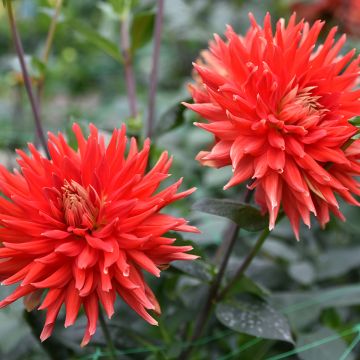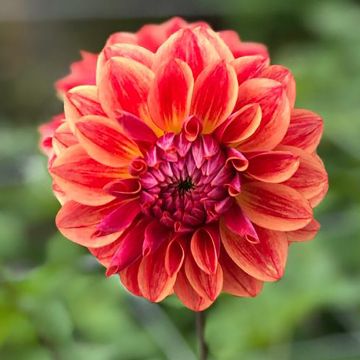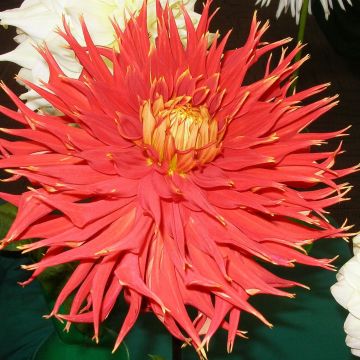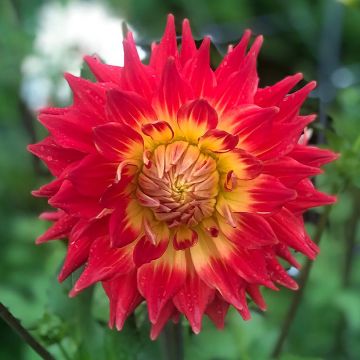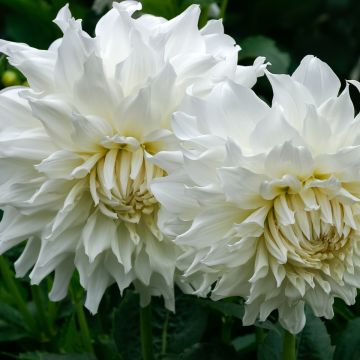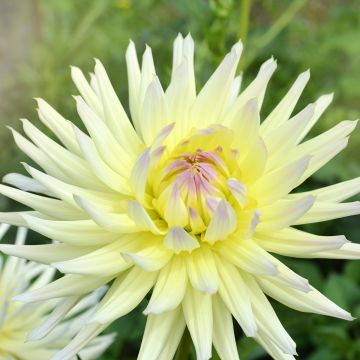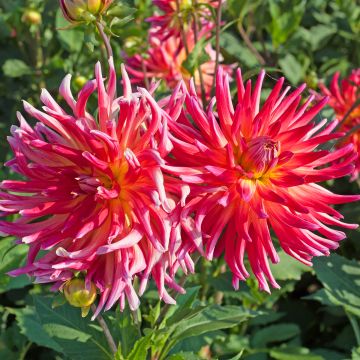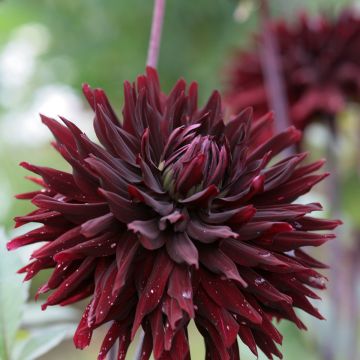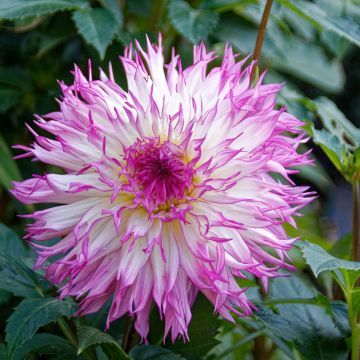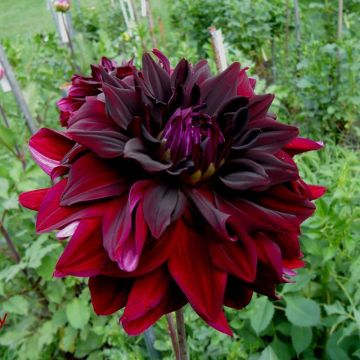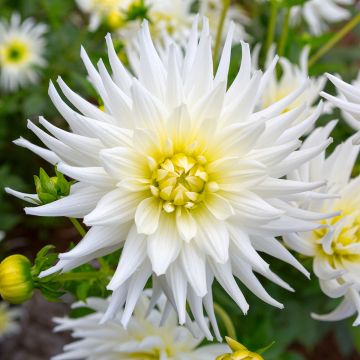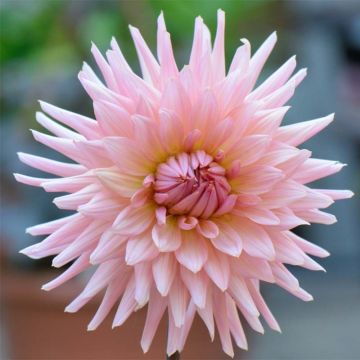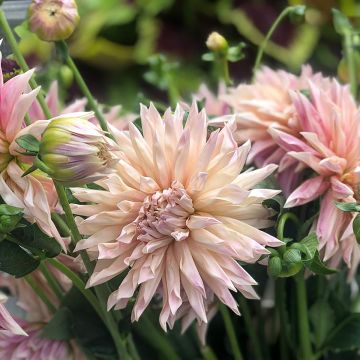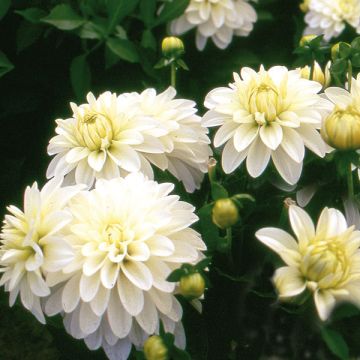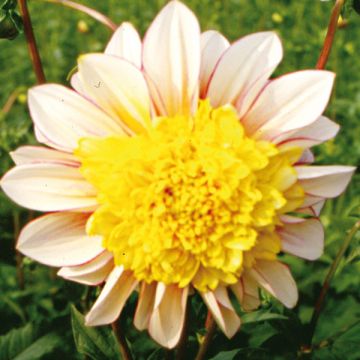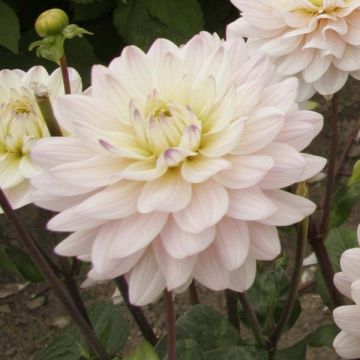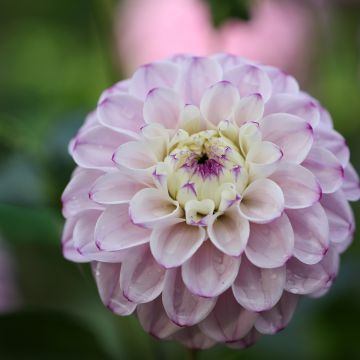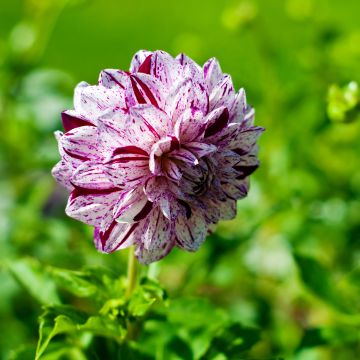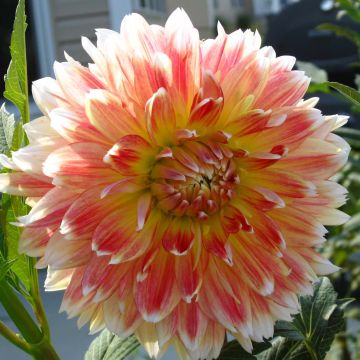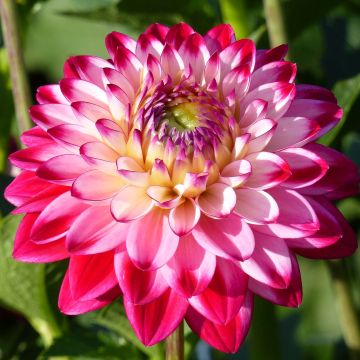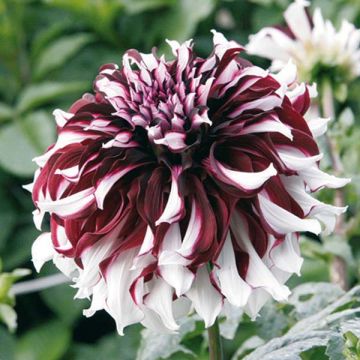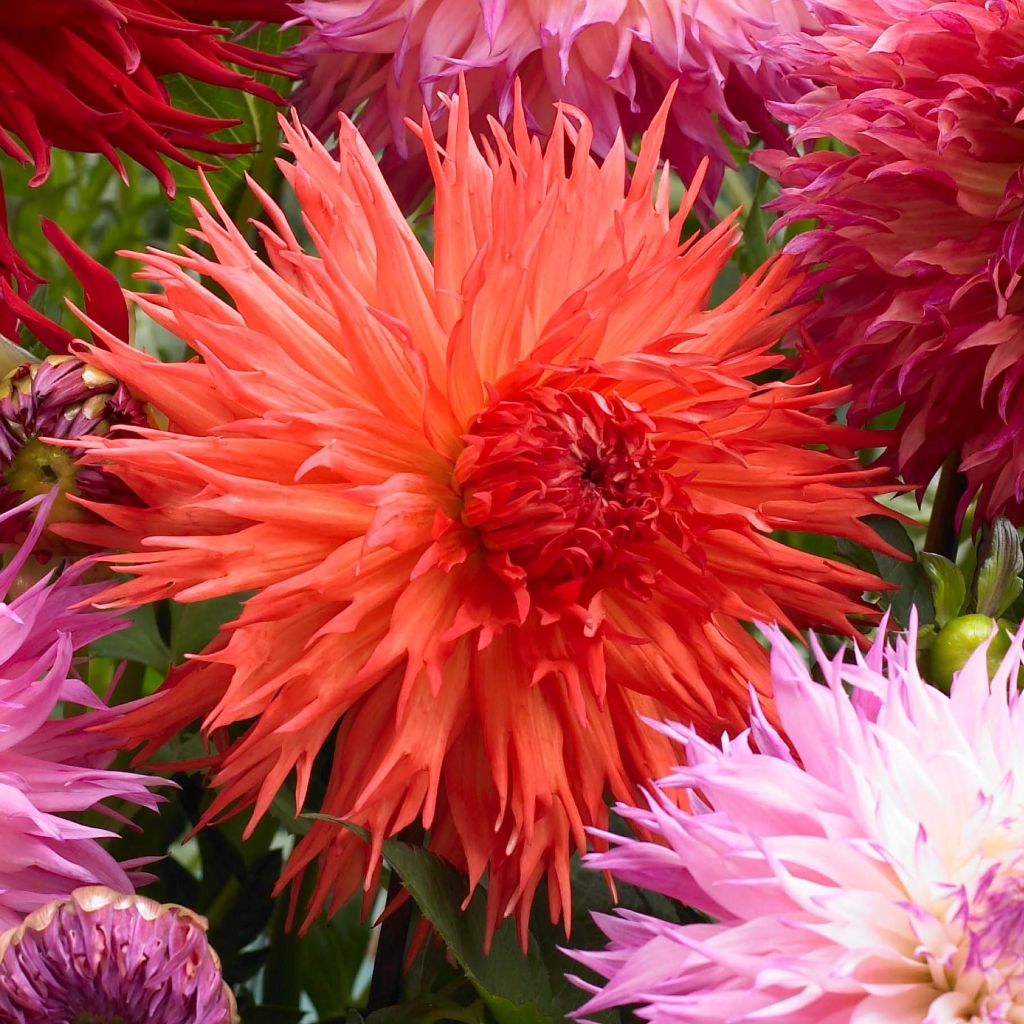

Dahlia 'Mel's Orange Marmalade'
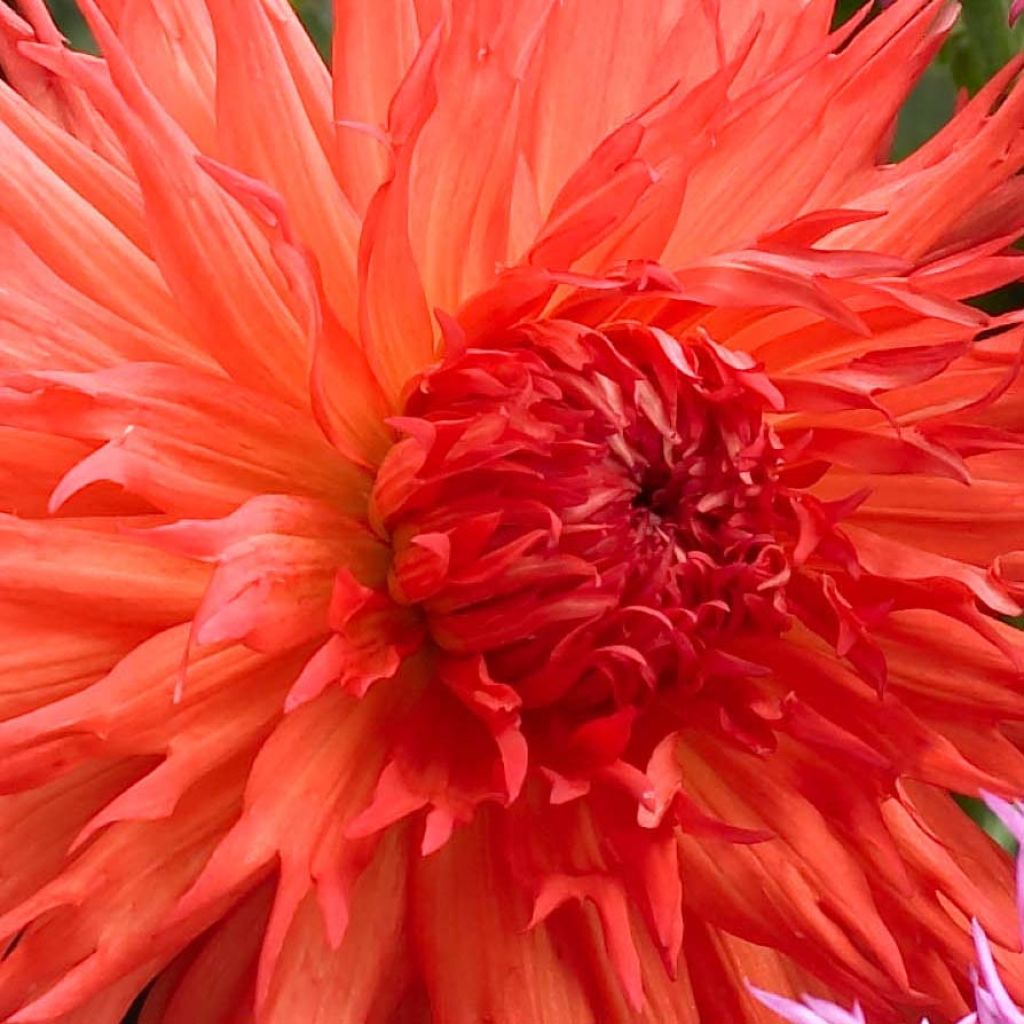

Dahlia 'Mel's Orange Marmalade'
Dahlia 'Mel's Orange Marmalade'
Dahlia Mel's Orange Marmalade
Dahlia
Didn't bloom for the first two years, but this summer it gave me a...yellow flower!!! I apologize for this variety non-conformity, you will receive a credit note by email. Yours sincerely
Béatrice, 07/09/2021
Why not try an alternative variety in stock?
View all →This plant carries a 6 months recovery warranty
More information
We guarantee the quality of our plants for a full growing cycle, and will replace at our expense any plant that fails to recover under normal climatic and planting conditions.
From €5.90 for pickup delivery and €6.90 for home delivery
Express home delivery from €8.90.
Does this plant fit my garden?
Set up your Plantfit profile →
Description
The Dahlia Mel's Orange Marmalade, often unavailable, offers semi-cactus type flowers, somewhat variable in appearance, formed by fringed petals that give them a lot of lightness. They are medium-sized but shine in the sun with their pure orange color or sometimes touched with pink. This sparkling Dahlia will create an interesting visual impact in the garden or in original bouquets, from the beginning to the end of summer. It is a standard size variety, whose elegance will be revealed by blue or white flowers.
Dahlias belong to the asteraceae family and are originally from the high plateaus of Mexico. At present, the few 25,000 horticultural varieties obtained by humans have invaded, to our great pleasure, gardens all over the world. They are hardy perennials with fleshy tubers.
The 'Mel's Orange Marmalade' variety forms a bushy clump 90 cm (35in) to 1.10 m (4ft) high and 60 cm (24in) wide in a period of 3 to 4 months. This cultivar is part of the decorative Dahlias with cactus flowers, or more precisely semi-cactus; it is a horticultural category defined by the shape of the flower. In this group, the colored ligules of the head do not completely wrap around at least 1/3 of their length. This Dahlia has ligules cut into a fork at their ends. The flowering of this variety begins in July and ends in September-October. The heads measure 10 to 15 cm (4 to 6in) in diameter. The habit is bushy and upright, and the strong, very branched stems are hollow and reddish in color. Its leaves are opposite, pinnately divided into 3 or 5 toothed lobes. The leaves are dark green.
To extend the flowering period and promote floral re-growth, be sure to remove faded flowers. Even better, regularly cut them to create seductive colorful bouquets by combining several varieties.
'Mel's Orange Marmalade' enhances the solid and light flowerings of phlox paniculata, Salvia jamensis, campanulas, cosmos, as well as those of the cactus Dahlias 'Chat Noir', 'Tsuki Yori no Shisha' or Giant Dahlia Vassio Meggos. It also blends particularly well with the wine-colored plumes of amaranths, castor oil plants, yarrows, and large daisies. In flower beds, it will also perfectly match Echinaceas, Helenies, and crested dog's-tail grass. With Sedums and miscanthus, it will also make a lovely original mix.
As a star plant in borders and ornamental gardens, Dahlias confidently accompany the most beautiful flowers but are also appreciated alongside vegetable plants. In Mexico, this tuberous plant was first cultivated as a root vegetable for consumption. But its poor taste qualities assigned it the status of an ornamental plant. Since then, the interest in their beautiful exuberance has never waned.
Report an error about the product description
Dahlia 'Mel's Orange Marmalade' in pictures
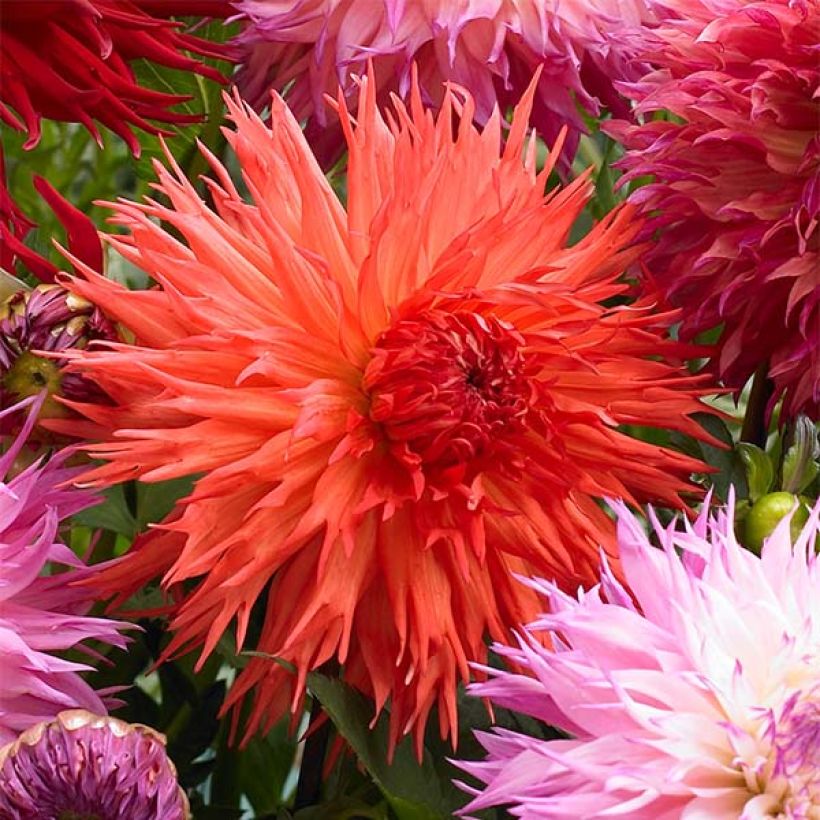

Plant habit
Flowering
Foliage
Botanical data
Dahlia
Mel's Orange Marmalade
Asteraceae
Dahlia
Cultivar or hybrid
Other Cactus Dahlia
Planting and care
Plant your dahlias in the spring in deeply worked soil enriched, for example, with blood, fish and bone. Place your tuber and crumble the soil well to fill without air pockets. Your dahlia should be covered with 6 cm (2in) of soil. At the end of planting, pour one litre of water. Water regularly for the first six weeks to help with rooting. Dahlias are sensitive to cold. They need to be overwintered. In November, the first frost will blacken the foliage, which is the time to remove them. Carefully dig up the tubers. Remove as much soil as possible. Let the foliage dry so that the tuber can replenish its reserves. Cut the stems 10 cm (4in) from the tuber when the foliage is dry. Spread your bulbs in a box of newspaper. Store in a frost-free, dry, cool, and dark place.
Planting period
Intended location
Care
-
, onOrder confirmed
Reply from on Promesse de fleurs
Dahlias
Haven't found what you were looking for?
Hardiness is the lowest winter temperature a plant can endure without suffering serious damage or even dying. However, hardiness is affected by location (a sheltered area, such as a patio), protection (winter cover) and soil type (hardiness is improved by well-drained soil).

Photo Sharing Terms & Conditions
In order to encourage gardeners to interact and share their experiences, Promesse de fleurs offers various media enabling content to be uploaded onto its Site - in particular via the ‘Photo sharing’ module.
The User agrees to refrain from:
- Posting any content that is illegal, prejudicial, insulting, racist, inciteful to hatred, revisionist, contrary to public decency, that infringes on privacy or on the privacy rights of third parties, in particular the publicity rights of persons and goods, intellectual property rights, or the right to privacy.
- Submitting content on behalf of a third party;
- Impersonate the identity of a third party and/or publish any personal information about a third party;
In general, the User undertakes to refrain from any unethical behaviour.
All Content (in particular text, comments, files, images, photos, videos, creative works, etc.), which may be subject to property or intellectual property rights, image or other private rights, shall remain the property of the User, subject to the limited rights granted by the terms of the licence granted by Promesse de fleurs as stated below. Users are at liberty to publish or not to publish such Content on the Site, notably via the ‘Photo Sharing’ facility, and accept that this Content shall be made public and freely accessible, notably on the Internet.
Users further acknowledge, undertake to have ,and guarantee that they hold all necessary rights and permissions to publish such material on the Site, in particular with regard to the legislation in force pertaining to any privacy, property, intellectual property, image, or contractual rights, or rights of any other nature. By publishing such Content on the Site, Users acknowledge accepting full liability as publishers of the Content within the meaning of the law, and grant Promesse de fleurs, free of charge, an inclusive, worldwide licence for the said Content for the entire duration of its publication, including all reproduction, representation, up/downloading, displaying, performing, transmission, and storage rights.
Users also grant permission for their name to be linked to the Content and accept that this link may not always be made available.
By engaging in posting material, Users consent to their Content becoming automatically accessible on the Internet, in particular on other sites and/or blogs and/or web pages of the Promesse de fleurs site, including in particular social pages and the Promesse de fleurs catalogue.
Users may secure the removal of entrusted content free of charge by issuing a simple request via our contact form.
The flowering period indicated on our website applies to countries and regions located in USDA zone 8 (France, the United Kingdom, Ireland, the Netherlands, etc.)
It will vary according to where you live:
- In zones 9 to 10 (Italy, Spain, Greece, etc.), flowering will occur about 2 to 4 weeks earlier.
- In zones 6 to 7 (Germany, Poland, Slovenia, and lower mountainous regions), flowering will be delayed by 2 to 3 weeks.
- In zone 5 (Central Europe, Scandinavia), blooming will be delayed by 3 to 5 weeks.
In temperate climates, pruning of spring-flowering shrubs (forsythia, spireas, etc.) should be done just after flowering.
Pruning of summer-flowering shrubs (Indian Lilac, Perovskia, etc.) can be done in winter or spring.
In cold regions as well as with frost-sensitive plants, avoid pruning too early when severe frosts may still occur.
The planting period indicated on our website applies to countries and regions located in USDA zone 8 (France, United Kingdom, Ireland, Netherlands).
It will vary according to where you live:
- In Mediterranean zones (Marseille, Madrid, Milan, etc.), autumn and winter are the best planting periods.
- In continental zones (Strasbourg, Munich, Vienna, etc.), delay planting by 2 to 3 weeks in spring and bring it forward by 2 to 4 weeks in autumn.
- In mountainous regions (the Alps, Pyrenees, Carpathians, etc.), it is best to plant in late spring (May-June) or late summer (August-September).
The harvesting period indicated on our website applies to countries and regions in USDA zone 8 (France, England, Ireland, the Netherlands).
In colder areas (Scandinavia, Poland, Austria...) fruit and vegetable harvests are likely to be delayed by 3-4 weeks.
In warmer areas (Italy, Spain, Greece, etc.), harvesting will probably take place earlier, depending on weather conditions.
The sowing periods indicated on our website apply to countries and regions within USDA Zone 8 (France, UK, Ireland, Netherlands).
In colder areas (Scandinavia, Poland, Austria...), delay any outdoor sowing by 3-4 weeks, or sow under glass.
In warmer climes (Italy, Spain, Greece, etc.), bring outdoor sowing forward by a few weeks.



































